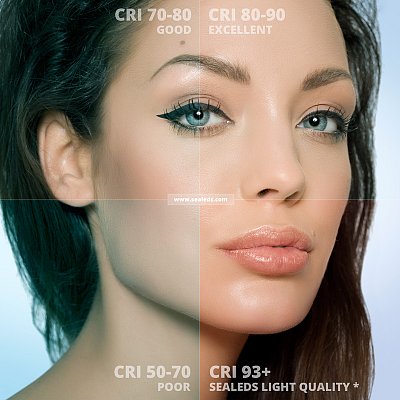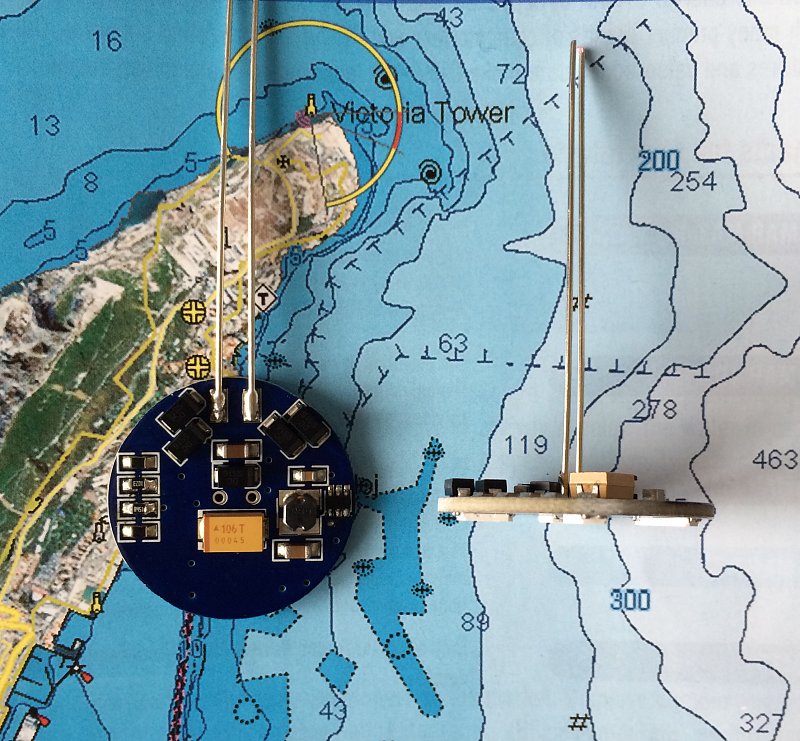How to choose correct marine LED replacement

As demand for LED’s lighting today is tremendous (mainly for house, industrial and architectural luminaries) there are many companies from all over the world offering products, which are only low price driven with unacceptable quality. The problem is how to judge and avoid buying the low class unacceptable quality (ideally before we spent money ;-) ). Normally when we, as end customers and users, see a very low price, poor package, not known brand, etc. we are quite sure it is low quality or „something wrong” with the product, but today with all sales and marketing tricks, incorrect parameters descriptions or just omitting some important values (parameters) end customer is in a difficult situation. There are LED modules offered on www.alibaba.com nicely packaged, overpriced, with the nice sounding brand name (not known though) and to be bought in Europe. In the end we are ready to pay a premium to avoid „cheap stuff” but still can end up with poor products. That experience is confirmed by my own, private research when I bought a variety of samples to examine them thinking about luminaries on my boat.
The market is using lots of tricks or just does not give correct and trustworthy parameters. When we see the names like Happy Dragon, Ever Smiling LED or Formosa Sun Rise we sensibly avoid making buying decisions while one can make serious mistakes judging that simple way. Just to remind you - LG Electronics known today from high quality products – not long ago was called Lucky Goldstar (until some smart international marketing specialists have advised to change it). But how to react on names like EuroLED, DYNALight, 4M, SGS or Just LED sounding quite convincing (despite the fact we have never heard of them before) especially when we learn their roots are in Germany, Spain, France Italy or… Poland. —— all those names were created by me, So my first advice would be - do not get misled with a good name and/or registration country of the distribution company.
What do we really expect from our LED light? It should be at least not worse than our old halogen or incandescent classic source. Sounds easy but it is not so. Even a few years ago no one was producing LEDs with parameters comparable to an old good light. The situation has changed today but these LEDs are still rare and quite expensive.
Colour:
As boat owners, we know that energy savings, by replacing halogen lights with LED, are significant. LED uses 12 to 20% of halogen energy and that parameter is still improving as the efficiency of light emitting diode reached over 200 lm/W.
For those who are extensive travelers, crossing the seas, living a few days on anchor, visiting forgotten undeveloped marinas, change for LED is a must - in my opinion.
We love our boats, for some of my friends, they became homes so most of us would prefer a nice and warm atmosphere like at home or maybe even better. Oyster interior designers put a lot of effort to create this climate for us while it was originally intended to use classic bulbs !!
Light is very important to create an atmosphere. It could vary from cozy and warm to unpleasantly cold like in a hospital…. From my experience, the best colour temperature for the boat interior would be 2700K, exactly the same as an old good incandescent bulb which is usually in the range of 2700 - 3000K. Knowing that our own perception of most suitable light temperature is subjective general information like “warm” is not good enough and means mainly that the manufacturer does not pay the right attention to the correct selection process (colour bin structure and intensity rank). In our production we use strict selection process (1 type per bin, and 1 type per rank), which means for you, that all modules are „the same” – differences are not possible to be recognized by the human eye and this is especially important when used more than one in same room/cabin.
Supply voltage:
One of the parameters is the supply voltage. Narrow voltage range, for example, 12V or 24V DC, usually, means manufacturer uses a very simple, very inexpensive solution to drive the module.
We use quite sophisticated, the smart driver made by Texas Instruments - one of the leaders in this field. It works correctly in a range from 10V to 30V, additionally, it has the supply flexibility - could be either from batteries DC or AC. You do not need to bother with polarity, looking were „+” or „-” are.
Installation is as simple as taking out old G4 Halogen bulb (often already burned to wait there for replacement ) and put the LED module in.
Components used:
The quality of components used in many available LED modules is poor, for example, capacitors are “not long life” and/or “not high temperature” additionally without required certifications - meaning for the user - lighting will deteriorate quickly. Components are not EMC suitable - for sailors means interfering with VHF and MF-SSB frequency etc. Cheap manufactures are often fighting for high lumen output, not assuring proper thermal conductivity, thus causing substantial lumen drop after several months in high ambient temperature (for example the Caribbean especially when replacing halogen in its original luminor). As the longevity given by producers is quoted for 20-25C, this means your lamp will probably „fade” quickly down to 30%
How many LED’s on PCB?
This is a quite common parameter used to qualify the „how good” LED module is.
It is mistake and trick - it really does not matter how many, as there are different efficiency LED’s and sometimes 1-2 pcs may give the same luminosity as cheap 6 or 9 pcs. The flip side is - designing a module with a low number of high-efficiency diodes can create visible spots of the light source, which is not accepted for a high quality of the light source.
We accept in our solution min 6 LED’s light source; LEDs have a viewing angle of 120°, so they interfere with each other in a positive way creating more evenly looking light. In addition, you may change the glass fixture to matt one, keeping in mind that this reduces the light output.
CRI what is this?
Colour Rendering Index (CRI) is a rating system that measures the accuracy of how well a light source reproduces the (total) colour of an illuminated object.

To make this more understandable imagine that you take beautiful red ripe apple or piece of cherry wood in a sunny day. The colours you see are real. You see the colour with high fidelity, with CRI 100 which is reserved for daylight and sun. If you then take to the artificial light, like an incandescent bulb, the result will be similar but if you use LEDs with poor CRI factors ( usually standard are on the level of 80) colours will be faded and not natural hue. Most manufactures of light fixtures for boats do not even bother to mention this parameter as their LEDs has undefined or very low CRI.
It is my belief that this parameter is an important influencer for light quality. For warm colours the minimum CRI you should be looking for is CRI90, however currently our SeaLeds have 93-95 CRI LED’s.
Today we also consider additional parameter “R9”, which is CRI subcomponent. These two parameters together CRI and R9 can give us complete light quality measures.
In our modules, we use minimum R9>50 which together with CRI >93 and warm light, might be used for lightning up your boat even if you have the most vivid colors on paintings or high-resolution pictures or art on board.
Special coating:
Being aware of extremely tough conditions for any electronics on board of the vessel at sea, we would like also to apply a special transparent coating of epoxy for the whole module to prevent any degradation and corrosion.
It is still under tests as most of the recommended coats are not neutral for Led’s lenses.
For those who are interested in more details about LED’s we will place interesting articles or links on our website www.sealeds.com - which unfortunately is still under construction as this subject is quite new for us, and we treat it as an interesting adventure rather than large business. However most of our activity today is driven by a passion for sailing and sea.

Parameters of our SeaLeds:
Brightness (lm) 216
Colour Temp: 2.700 Kelvin (super warm white)
Allowable operating Temp: -10°C...+50°C
Operating Voltage: DC 10-30V
Current Consumption: 0,17 A @ 12V / 0,08 A @ 24V
Power Consumption: max. 2,20 W
Effect on radio frequency - no interferences
CRI >93
The driver has built-in:
protection features such as pulse by pulse current limit,
thermal sensing and
shutdown due to excessive power dissipation.

